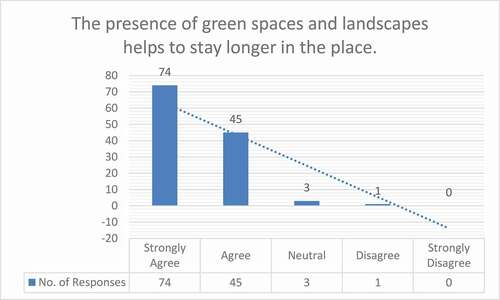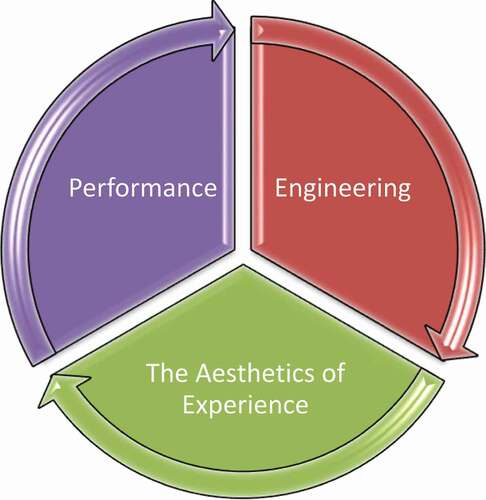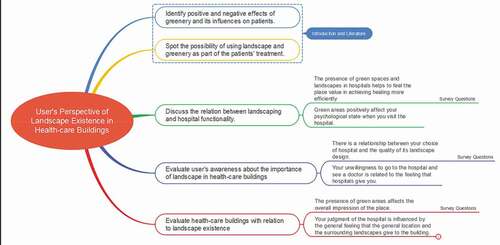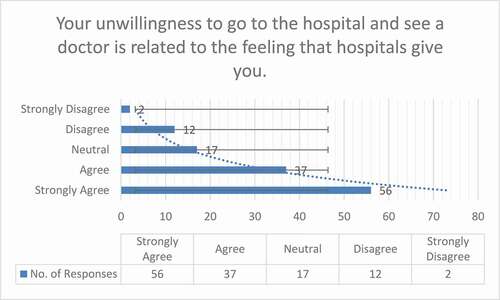ABSTRACT
Landscaping and greenery are some of the major factors that play a vital role in human being’s phycology and how one feels. It also affects people’s wellbeing and could improve their health. This made landscaping a primary consideration in places that focus on recovery and healing, such as hospitals. By showing this relationship between health and landscaping, the research goal is to improve and control the hospital buildings, which will be built or renovated in the future, especially in Saudi Arabia. The focus will be on buildings’ landscaping design and greenery to achieve high functionality spaces. This paper will detail the relationship between landscape as well as greenspaces in healthcare buildings.
A survey was published for patients in different hospitals in Saudi Arabia to analyze related thoughts and investigate the effectiveness of landscape existence on the patient’s recovery. Additionally, particular case studies were examined and analyzed. The results revealed that users believe that healing centers’ landscape unequivocally influence patient’s wellbeing and seeing scenes around the site. Furthermore, landscape in healthcare buildings is neglected; some recommendations were given for particular green areas with percentages to help improving the current healthcare buildings alongside the upcoming ones.
Introduction
As the world evolves, more interest is given to urban designs and greenery in diverse types of buildings; this stemmed from aiming to improve the quality of life by giving more thoughts into the design process to serve the occupants’ needs and thinking about future generations and their health. As a consequence, landscaping becomes an essential part of the components of any building. It can affect how people act and feel about the space in different ways and improve their quality of life. Studies have shown a relationship between the landscaping and greenspaces on human beings’ health, as the World Health Organization (WHO) defines health as ‘a state of complete physical, mental and social well-being and not merely the absence of disease or infirmity’ [Citation1,Citation2]. It has also shown that different types of greenery have a different impact on human beings’ resulting in a different way of thinking about designing according to the function behind. Some of the examples that green spaces’ can affect our health is by reducing stress and improving people’s mood [Citation3]. As mentioned in the book: Bringing User Experience to Healthcare Improvement: The Concepts, Methods …, There are three elements of good design ‘Performance, Engineering, The Aesthetics of Experience’ and this is applicable for any project or item as these concerns how well it does the job and fit for the purpose; how safe, well-engineered and reliable it is; and how the whole interaction with the service is experienced as shown in . This includes functionality, Safety, and usability [Citation4].
Researchers also studied landscape effects in four Dutch cities (Utrecht, Rotterdam, Arnhem, Den Bosch) where they questioned if health and greenery are related? And whether greenery existence moderates stress? The answers have strongly concurred that greenery is related with health and helps with stress [Citation5]. This leads to a belief that landscaping should be considered as a primary component of buildings’ design.
On the other hand, a study done in the United States has shown a remarkable association between emotional well-being (EWB) and greenspaces by using a developed application that measures the happiness and meaningfulness according to different activities included gardening. The result showed that gardening is one of the top 5 among the 15 other activities that were investigated [Citation6]. Another study discussed how the greenspaces and landscaping have accelerated the patients’ recovery process and how different types of greens impact them by an experimental survey; the patients have expressed their need for contact with nature [Citation7]. A systematic map on the effect of green spaces on mental health have shown that there are some gaps in the knowledge regarding methodological approaches, the range of observational studies have used cross-sectional data, so there resultant is not showing if there is a causal relation between green spaces and mental health nor the strength [Citation8].
This information leads to thinking about the possibility to improve and use landscaping as a part of the healing and recovery process of the patients in hospital buildings, especially in Saudi Arabia as there are plenty of spaces and prospective development. Also, it implies a query if this relationship is existing and prominent from the user’s point of view.
The relation between landscaping and hospital functionality
Landscaping has a major effect on people’s health specifically on hospitals among different institutions, either physical, psychological, or social effect. Outdoor areas in hospitals plays an important role as indoor spaces in the process of healing to the patients.
Physical effect is related to the healing process because it gives the patients a positive effect and a chance to feel their well-being. Also, positive effect on blood pressure, cholesterol levels and stress-reduction by interacting and spending time in the nature [Citation9].
People prefer to spend time in hospital and healthcare spaces with a green landscaping area due to its psychological effects on them because they have the chance to choose between a social environment and a private environment depending on their psychology and need at that time. Green spaces provide a social space for interacting with people in a better way that enhances the healing process by the time [Citation1].
Different types of greenery and its influences
As the types of greenery vary, their influence varies as well. Some of them have a positive impact on human wellbeing and the environment, while others can negatively affect users [Citation10]. For example, some types can play an essential role in improving air quality by purifying and reducing the humidity, leading to a healthier environment for people to help with the general health condition.
Other types of greenery help to improve the phycological condition of people through their smell. For example, lavender helps to relax. Some studies have shown that specific plants can help with stress, social cohesion, and mental health [Citation11]. These influences and factors could be used to the favor of improving public health in several ways. One is through landscaping in hospitals.
Possibility of using landscape and greenery as part of the patients’ treatment
It may be the habit of seeing nature as a healer drawn from history’s way out. In Europe, during the Monastic hospitals delivered in the Middle Ages with fenced gardens of vegetation with the intent of completing the spiritual transformation of patients. Nature’s role in bodily regenerate a better foothold was increased in the 17th and the 18th century, the arrival of modern research. Medicine recommended that the spread of infections was through poisonous vapors in the air. This promoted designs for architecture that gave new air attention and cross-ventilation. In Notes on Nursing, Florence Nightingale (1860), Wrote on the significance of direct, fresh air Sunlight and visual communication with nature to promote the body’s regeneration. Healing gardens roles include opportunities for physical movement and exercise, opportunities to make decisions, pursue privacy and a sense of control, habitats that allow people to gather and enjoy social encouragement and access to nature and other beneficial distractions, and reduce pain and tension for patients suffering from incurable or chronic disease) [Citation12].
A study with a thesis showing that the link between humans and green plants has existed since ancient times, and the number of studies focused on the problem has recently increased. The presence of green foliage facilitates regeneration by triggering beneficial improvements, such as increased blood pressure, improved heart function, enhanced muscle activity, and improved brain electrical activity and it has shown that there are three separate patient groups on how therapeutic hospital gardens should be designed: dementia, catastrophic, psychiatric. It considered how and when planning a garden for each. The planner has to resolve variations within these patient populations. Therapeutic gardens will, in turn, encourage improved patient outcomes, as the study indicates [Citation13].
Other studies also revealed that keeping gardens esthetically appealing will minimize discomfort, decrease the need for drugs, speed up the healing process, and promote the journey to recovery [Citation14,Citation15]. There is a need to address and discover knowledge about therapeutic gardens and how particular patients might benefit from their existence. A study shows how the characteristics of each of the different gardens are sensitive to the environmental preference factors of the Kaplans (coherence, legibility, mystery, and complexity); to the four stress relief factors of Ulrich (movement and exercise, social reinforcement, sense of control, and natural distractions); and to other factors defined as significant by the other case studies garden directors (safety, security, and accessibility).
The study analyzed plans that differ from each other in individual location places with comparatively greater focus on characteristics. For example, all three gardens have pathways: the material in the pathway varies in the dementia garden at entry and exit points to alert the individual to move (i.e. an indicator of going from outside to indoors); they are wide and circular in the disastrous garden, and they follow a grid pattern in the psychiatric garden. Every garden also contains a water feature: it serves to soothe in the dementia garden; it primarily serves to distract in the disastrous garden. It mainly helps to provide an opportunity for meditation in the psychiatric greenhouse. The dementia garden emphasizes wall seats and benches; the fatal garden emphasizes planting opportunities; the clinical garden emphasizes intimate seating and allows distinct positions for private reflection. All three gardens provide mutual support, although in very different ways. Finally, and importantly, all three gardens emphasize sensory attraction as a way of achieving stress relief, diversion, and pleasure (visual, auditory, tactile, and olfactory) [Citation12].
So, this paper aims at, investigating the user’s perception of landscaping presence as a part of hospital functionality. In addition, the user’s opinion about the possibility of using landscape and greenery as part of the patients’ treatment. In addition, an evaluation took place for existing hospital landscape at one of the leading cities in the Kingdom of Saudi Arabia.
Methodology
The objective of this study is to show how people’s feelings and psychology in the hospitals are affected by the existence of landscaping areas. The method used is binary, where a survey that targeted the people living in a specific region in the Kingdom of Saudi Arabia is held. In addition, other hospitals case studies were examined. The study assumption is that landscaping is highly important in hospitals and is considered as an essential part in enhancing the health recovery and psychology of patients, hospital employees, and visitors.
The information was collected by a survey with multiple-choice questions and Likert 5-point scale that focused on showing the quantitative data of the questions. Other descriptive data was collected by gathering observations and people’s experience and opinions in open-ended questions. The survey was conducted by a questionnaire designed by Google Forms Documents website, which was then sent to people living in the region by social media applications. People started answering the questions after 4 min from sharing it. The survey had six Likert questions and two open-ended questions that were answered by 124 persons.
The two case studies were selected as follows: -
First case study: the hospital which is rated the highest in patients’ evaluation worldwide.
Second case study: the biggest hospital in Jubail Industrial City, Kingdom of Saudi Arabia. This city is a leading city, which won the Arab Green City Award, it has 1.5 million trees and 1.3 million square meters of grass.
The shape below explains the paper target with relation to the method used.
Discussion/analysis
By using the SPSS analysis program, the survey results revealed that the data collected is reliable and the Cronbach’s alpha or coefficient alpha test value is 0.709 where survey results are connected and related to each other.
Out of 124 responses a mean of 4.81 out of 5 strongly agreed that landscape areas have a major effect on people’s healing process and their psychology when they visit the hospital. Besides, an average of 4.56 out of five, which means strongly agreed as well, found that having landscape areas within the hospital design helps them to value their stay meanwhile affected the overall impression of the whole place.
Figure 3.AQ9 Number of responses about the landscape presence and its relationship with the time spent at the hospital premises

Not only the user’s impression about the place, but also 3.72 out of five strongly agreed that the hospital landscape design can affect their decision in choosing a particular healing facility. In the meantime, the participants strongly agreed with 4.1 out of 5 that their judgment of a hospital is influenced by the surrounding landscapes and the general location of the hospital building, which in turn affects the user’s decision in going to a particular hospital rather than another one. Participants also confirmed with 4.07 that their willingness to go to the hospital and see the doctor is connected with the feeling the hospital location, building design, and landscaping; give to them.
Studies approved that landscape increase the comfort level and well-being; hence, people appreciate and like to have and see garden elements such as lawns, trees, flowers, and water features. The landscape plays a major role in the recovery process, because the visual part is an important share in the healing process, especially if it is connected to the things people see in their daily life such as, a green and colorful landscape. This shows that landscape is really important in people’s life and reflects user’s awareness about the importance of landscape in health-care buildings.
Case studies
Cleveland Clinic, USA, Ohio
One of the leading hospitals around the world is Cleveland Clinic in Cleveland, OH. it was ranked as the second of the best hospitals in 2020 according to the U.S. News and World Report in the Best Hospitals Honor Roll, with national rankings in 14 adult and 10 pediatric specialties, including the Department of Psychiatry. Since 1995, the cardiology program has been ranked first in the country [Citation16]. The hospital campus has been developing and expanding over the years, yet it was well designed and proportioned that it was known for its greenery and large use of landscape. To understand the importance of space planning and its role besides the staff and the quality of the services and other clinical equipment, the researchers have studied the layout of the clinic and calculate the percentages of the facilities. the results showed that the built area represented 31.82% of the total area, while the landscape occupies around 48.32%, the remaining areas were either parking slots or roads. this result highlights the importance of the landscape and green area and its role in healthcare facilities.
Royal Commission Hospital, KSA, Jubail
Another hospital that is considered one of the main hospitals in the eastern province in Saudi Arabia, is the Royal Commission Hospital in al-Jubail Industrial city. It holds the JCI—Joint Commission International—accreditation which is a certification given to hospitals that are recognized as a global leader for health-care quality of care and patient safety along with other 5 different certifications [Citation17].
Yet, with all these services and such quality, the hospital environment was not as welcoming and organized as the patient would imagine based on their comments and survey feedback. after calculating the hospital areas with relation to the site plan, it has been found that the built area represents 24.81% of the total space, while greenery and landscape area occupy only 5.48%, and the rest is devoted for parking and traveling through spaces in addition to a lot of empty lands with potential to be designed as landscape areas.
As shown in the previous examples of the two hospitals, it appears that landscape can be considered as a major part of the hospital’s effectiveness as it touches the whole journey of treatment and its efficiency. Thus, it is suggested investing and put more effort into the landscape and greenery designing in hospitals in Saudi Arabia to improve and reach a greater level.
As shown in , the built area is near in both cases, but the landscaping area in the Saudi hospital occupies only one-tenth of the devoted landscape area in Ohio hospital. Additionally, lots of spaces are left without purpose. Based on the survey results in the previous section, people do value the landscape existence and believe in its effect on the medication process. Meanwhile, most of the leading hospitals neglect the landscape presence and its importance as an effective part in the healing process.
Table 1. Comparison between the selected case studies
Results
From the data that have been collected through the survey, and the results analysis discussed in the previous parts alongside the aforementioned case studies, it shows the possibility that landscape, and greenery are considered a significant part of human wellbeing, and it has to be implemented in the hospitals as a part of the treatment methods. This result can be supported by the findings of the following points:
As discussed, it is evident that plants and landscape can play an essential role in human wellbeing, which led to think if it is possible to use it in the process of helping the patient in hospitals to get better and implement it as a part of their treatment. By investigating and seeing what people think about this, the survey conveyed that it matters and affects people’s behavior and feeling about the hospital if its landscaping is adequately designed; this proves the point that states the possibility of greenery to affect how people feels in space, it is also known that people’s spirits play a primary role in patient recovery.
Furthermore, research titled” Effect of Hospital Landscaping on the Health and Recovery of Patients” has studied this by investigating some hospitals located in Pakistan. It has been made clear that patients who have access to hospitals with well-designed landscaping show a remarkable recovery ratio compared to others who have no access [Citation1].
Some leading hospitals in the kingdom have plenty of areas, but these spaces are not oriented and designed for the sake of having landscape and green areas. This in turn affected users’ perception and evaluation of local hospitals. These spaces need reevaluation and to be rec-connected with the needed quality of life as per the kingdom vision for 2030. The landscape area in healthcare buildings need to be around 50% of the total area given for the hospital. This area needs carful design and connection with the activities needed in this kind of buildings.
Conclusion/limitation
Humans’ wellbeing means both mental and physical health condition. In this paper, it focuses on landscape importance to improve mental health, which leads to enhancing physical health, especially in hospitals. A survey conducted for patients to show their thoughts about landscape design influences in hospitals, which has shown that most would prefer hospitals that their landscape is well designed; this proves that greenery affects mental health and support the idea of implementing greenery in hospitals as part of the treatment process. Three points support this result:
The relation between landscaping and hospital functionality as mentioned in point (1.1).
Different types of greenery and its influences on patients as mentioned in point (1.2).
Possibility of using landscape and greenery as part of the patients’ treatment as mentioned in point (1.3).
Additionally, researchers can examine this result and support it to improve hospitals’ quality over the world. The green area reached approximately 50% of the total hospital area in the above-mentioned case study. This can be reevaluated based on the functionality of the landscape areas and the needed impression patients do need for the healing process. The way to implement greenery in the treatment of patients also needs to be illustrated in future studies. It is concluded that normal vegetation and healing centers scene play a crucial part in wellbeing of patients through different physical, mental, and social benefits. As well, evidence from ponders of several respondents unequivocally recommends that gardens and other natural component help move forward patient’s fulfillment with the execution of healthcare supplier and by large quality of care. Landscaping area in hospitals plays a major role in the healing process of patients in hospitals and workers.
Existing areas around hospitals might be revisited and redesigned to support the ultimate kingdom goal toward 2030 vision in raising the quality of life.
Other hospitals can be analyzed and the landscape area to be calculated and determined according to the hospital type.
Disclosure statement
No potential conflict of interest was reported by the author(s).
References
- Aslam A, Zaman F. Effect of hospital landscaping on the health and recovery of patients. Adv Agri Biol. 2016;5:4.
- Darwish MA, Al-Saif G, Albahrani S, et al. Lifestyle and dietary behaviors among Saudi preschool children attending primary health care centers, Eastern Saudi Arabia. Int J Family Med. 2014;(2014:1–9.
- Masterton W, Carver H, Parkes T, et al. Greenspace interventions for mental health in clinical and non-clinical populations: what works, for whom, and in what circumstances? Health Place. 2020;64(Apr):102338.
- Paul Bate GR. bringing user experience to healthcare improvement: the concepts, methods …; 2007. Available from: https://books.google.com.sa/books?hl=en&id=EI64-jhyBZcC&oi=fnd&pg=PR5&dq=User%27s+Perspective+of+Landscape+Existence+in+Healthcare+Buildings&ots=E6QnN5_WBx&sig=54SlegdoNnjsR3gwDCxQpCmC5AY&redir_esc=y#v=onepage&q=berkun&f=false
- De Vries S, van Dillen SME, Groenewegen PP, et al. Streetscape greenery and health: stress, social cohesion and physical activity as mediators. Soc Sci Med. 2013;94:26–33.
- Ambrose G, Das K, Fan Y, et al. Is gardening associated with greater happiness of urban residents? A multi-activity, dynamic assessment in the Twin-Cities region, USA. Landscape Urban Plann. 2020;198(Jan):103776.
- Chang KG, Chien H. The influences of landscape features on visitation of hospital green spaces—a choice experiment approach. Int J Environ Res Public Health. 2017;14(7):7.
- Collins RM, Spake R, Brown KA, et al. A systematic map of research exploring the effect of greenspace on mental health. Landscape Urban Plann. 2020;201(May):103823.
- Firdevs G. Hospital outdoor landscape design. In: Advances in landscape architecture. InTech; 2013. DOI:https://doi.org/10.5772/55766
- Elantary AR, Aldubaisi FF, Alasif ZA. How to have a home garden ! Problems and solutions. Qatif case study. J Agri Environ Veterinary Sci. 2021;58(5):58–71.
- Karakas T, Yildiz D. Exploring the influence of the built environment on human experience through a neuroscience approach: a systematic review. Front Architect Res. 2020;9(1):236–247.
- Bereket A, Besha A. Therapeutic landscape; 2011 Oct. DOI:https://doi.org/10.13140/RG.2.2.15936.15367
- Palazzo D. The living landscape. an ecological approach to landscape planning, 2nd ed. by Frederick R. Steiner. New York: mcGraw-Hill, Inc., 2000. 477 pages, $59.95 clothbound. ISBN 0-07-079398-0. Landscape J. 2001;20(2):190–191.
- Hartig T, Mitchell R, De Vries S, et al. Nature and health. Annu Rev Public Health. 2014;35(1):207–228.
- Wu Y, Swain RE, Jiang N, et al. Design with nature and eco-city design. In: Ecosystem health and sustainability. Vol. 6. Issue 1. Taylor and Francis Ltd; 2020. doi:https://doi.org/10.1080/20964129.2020.1781549
- Cleveland Clinic in Cleveland, OH - Rankings, Ratings & Photos | US News Best Hospitals Rankings; n.d. [cited 2021 Jun 22]. Available from: https://health.usnews.com/best-hospitals/area/oh/cleveland-clinic-6410670
- Home; n.d. [cited 2021 Jun 22]. Available from: https://www.rchsp.med.sa/en/Pages/home.aspx






